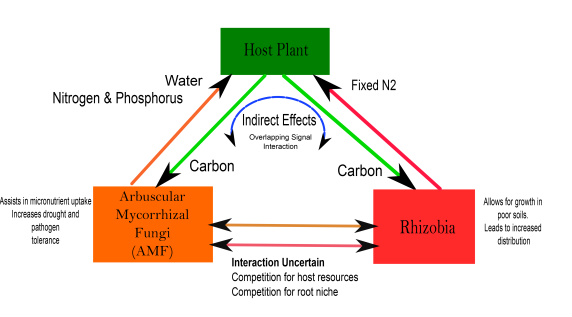
Soil: At the surface it appears to be nothing more than an inert tapestry where plants emerge and insects roam. But take a closer look (if you dare). Dive in past the layers of rough, dried-up Earth, past the swarms of ants and foraging beetles, and you will suddenly find yourself immersed in a bustling metropolis overrun with bacteria and fungus. Weaving their way through an intricate, eerily dense forest of underground roots, hundreds of these species compete for precious (and limited) space on the plants. They fight their way through neighboring competitions in a never-ending battle to gain access to plant roots that will give them the nutrients they crave, as well as a stable home. Roots slowly become overtaken with these microorganisms, like ants to a dropped sandwich on a sidewalk. But fear not for the plant and its roots. In an evolutionary twist, the plant gladly welcomes the hungry guests, and not only provides them with hardy amounts of food (in the form of carbon), but simultaneously collects vital nutrients for itself from its new partners.
Members of the legume family (soybeans, pea, and peanuts to name a few) are one group of plants that work alongside bacteria and fungus. These plants are often not able to get all the nutrients they require, most often due to living in harsh conditions (nutrient poor soil, lack of water). While humans can simply take a multivitamin or move to a more pleasant location, plants must make do with what they have around them, and are limited in how well they can grow by the nutrients in a small area.
Legumes allow only very specific bacteria (called rhizobia) and fungus (known as arbuscular mycorrhizal fungi) to colonize their root systems, almost as if each plant has a bouncer guarding the root “door,” keeping harmful bacteria and fungus out while letting beneficial types past the “velvet ropes.” Once in, the rhizobia form small “houses” called nodules along the roots of the plant wherein they acquire nitrogen for their new host plant. Likewise, the arbuscular mycorrhizal fungi enter directly into the plant’s roots, resting snuggly between its cells to increase the plant’s ability to absorb water (like a sponge), as well as bringing in essential phosphorus for growth.
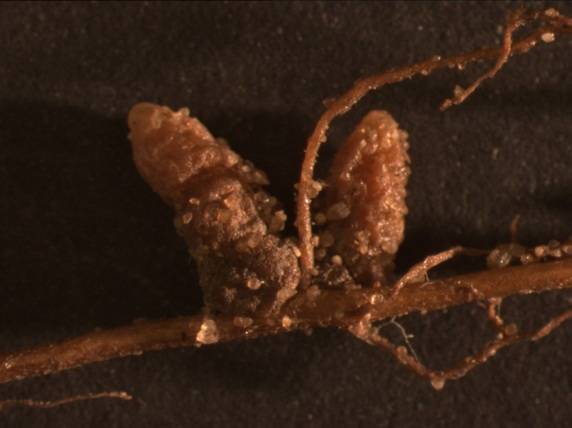
Nodules from Kankakee
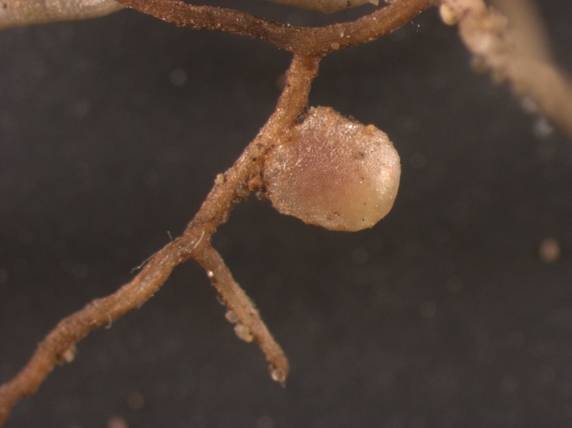
But how can these plants support so many partners? Each partner that is allowed access will, in turn, require a donation of carbon from the host. While a plant does get nutrients from its new partners, it can only make so much carbon to give back to them. By having a multitude of partners (or symbionts) the plant will begin to invest more of its carbon into them, and soon finds itself in a tradeoff: keeping the carbon for itself (for growth) and investing less in its symbionts or allowing more symbionts onto its roots and losing more of its carbon. How can the plant decide what to do? Studies have shown that plants avoid this conundrum by choosing only the best of the best. Most legumes will form partnerships with only the most beneficial rhizobia and arbuscular mycorrhizal fungi — those that will give the most back to the plant — and keep less beneficial rhizobia and arbuscular mycorrhizal fungi out in the cold (although this screening process remains very unclear).
The legume has been evolving for millions of years, working to instill the cooperation of both its symbionts. The rhizobia and arbuscular mycorrhizal fungi were once actually parasites on the plants (stealing the carbon and giving nothing back) until they all learned to get along (after a few million years). Nowadays, the cooperative relationship is found extensively throughout nature, as well as in economically important crops like soybeans. Unfortunately, we are starting to learn that this crucial relationship becomes unstable when plants are drenched in heavy fertilizers. Studies have shown that when placed in heavily fertilized fields, over time, rhizobia can become increasingly less efficient. Once the plant finds itself in a sea of nitrogen rich fertilizer, it no longer needs the rhizobia. The rhizobia, however, still want the plant’s carbon and will attempt to sneak onto the plant and fail to give anything back to the host. There is now a growing concern that the rhizobia may revert back to their parasitic ways, settling onto the crops when they are not needed and draining plants of nutrients, causing irrevocable damage to a multitude of crop varieties. It remains unclear, however, if these rhizobia will then spread throughout fields or force plants to evolve new ways to keep these cheating types out.
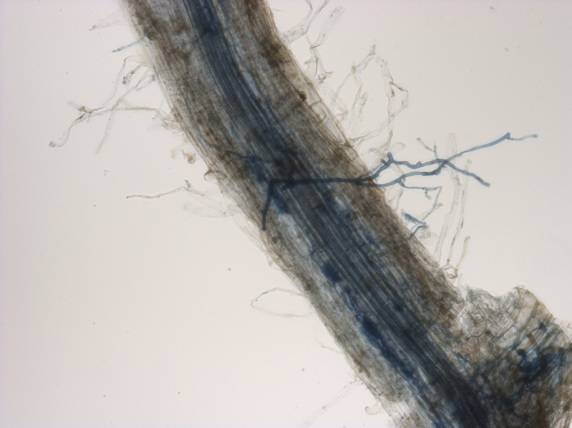
Hyphae and Arbucules
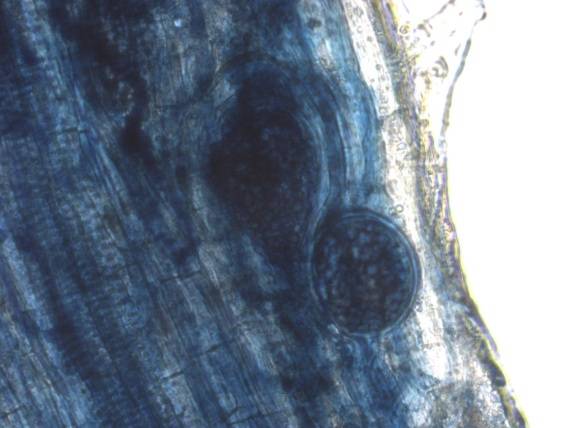
Inside close-up of spor
As a result of seeing what a huge and significant role these symbionts play on legume success, there has been a growing emphasis for using “natural fertilizers.” Most plants will have only one symbiont in nature, usually arbuscular mycorrhizal fungi or rhizobia, but few have both. In theory, we could modify plants and give them the proper tools to signal and allow other symbionts onto its roots, thereby decreasing the amount of fertilizers needed to ensure plant growth and success. Pushing such a change in plant behavior, however, could have unforeseen consequences.
Hardy, big plants would have no problem hosting multiple partners, but it is uncertain how adding new symbionts to a plant could affect symbionts that it already cooperates with. One critical missing piece of understanding is how the actual plant symbionts coexist. These symbionts are sharing space on the roots, and working to get carbon from the same plant. While they are not competing in the true sense, one could imagine how easy it would be for a plant to start favoring one symbiont type (rhizobia or arbuscular mycorrhizal fungi) and kicking the other off the root. One experiment has already shown that once a root has been saturated with rhizobia, the plant will actually prevent arbuscular mycorrhizal fungi from colonizing and vice versa.
What remains unclear is if plants can choose what type of symbiont they need on their roots. For example, could plants start to take up only arbuscular mycorrhizal fungi if the environment is going through a drought? Likewise, could the plant only take up rhizobia if it is in dire need of nitrogen? While a lot of beneficial applications have been proposed, it is critical that we learn how these symbionts normally occur and interact. What is an average amount of colonization for each partner? Do plants prefer a lot of rhizobia and just a few arbuscular mycorrhizal fungi, or vice versa? What causes shifts in the normal behavior, a change in the environment or a change in the other partner’s presence? By looking at plants in prairie systems, we are hoping to gain a representative picture of what “normal” looks like for these hosts and their partners, and then using that background to identify what can cause a change in partner cooperation and prevalence.
This relationship, while it sounds idyllic and simple, is, in reality, anything but that. There is a plethora of questions just now coming to light about this system, and if answered could lead to new ways in which we grow crops and handle farmland. Understanding how the symbionts interact and perceive one another (if at all) has the potential to change how we look at these types of partnerships. Traditionally, we have looked at these positive interactions from the perspective of the plant. There is now a growing shift in looking at things through the perspective of the rhizobia and arbuscular mycorrhizal fungi, and how they get through the day while creating such a large impact on the host plant.
Written by Julia Ossler.








